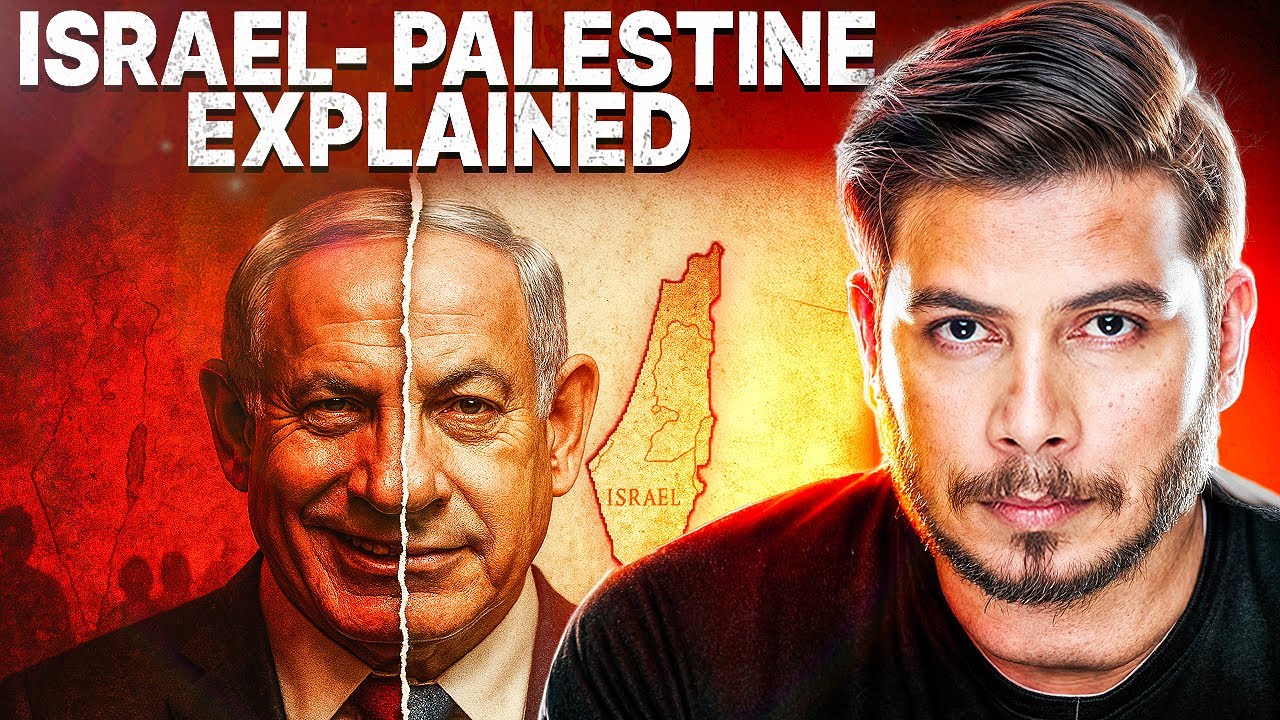Reality of India's R&AW
Summary
TLDRThis video script delves into the history and operations of India's external intelligence agency, R&AW, from its inception in 1968 to modern times. Highlighting key events, the script discusses R&AW's role in significant incidents, including the Indo-Pakistan wars, the Kargil conflict, and the Mumbai attacks. It also touches on political interference and the challenges faced by intelligence officers. The video promises an in-depth look at the agency's preparation, operations, and the impact of its work on national security, using insights from former R&AW officers and various research materials.
Takeaways
- 🇮🇳 The Research and Analysis Wing (R&AW) of India was established in 1968 to focus on intelligence operations outside of India's borders, with its headquarters in New Delhi.
- 📜 R&AW officers and their families are required to sign a declaration stating they are not associated with the RSS or Communist parties, a policy that has not been updated even when leaders from these affiliations have held high office.
- 🕵️♂️ The agency has used innovative methods to gather intelligence, such as collecting hair from scientists to detect neutrino radiation, indicating work related to nuclear activities.
- 🔄 R&AW has faced political interference and has had to navigate through internal conflicts with other agencies like the Intelligence Bureau (IB), affecting its operational capabilities.
- 🚫 During the tenure of Morarji Desai as PM, R&AW faced significant challenges, including budget cuts and restrictions on its operations, which impacted its ability to counter Pakistan's nuclear program.
- 🛑 The Kargil War highlighted intelligence failures within R&AW, where crucial information was either ignored or not acted upon promptly, leading to strategic disadvantages for India.
- 🛡️ The aftermath of the Kargil War led to a comprehensive review and restructuring of India's national security apparatus, resulting in the formation of the National Security Council (NSC) for better coordination among various agencies.
- 🔄 R&AW has been involved in significant operations, including the tracking of opposition leaders and the exposure of illicit arms supplies to Pakistan, demonstrating its wide-ranging influence.
- 🔒 The Intelligence Organizations (Restriction of Rights) Act, 1985, was enacted to prevent R&AW employees from sharing sensitive information with the media, highlighting the need for secrecy within intelligence operations.
- 🛂 R&AW's operations have involved a blend of technology, espionage, and strategic planning, as evidenced by its efforts to secure the Siachen Glacier and its involvement in various critical events in India's history.
- 📈 The importance of R&AW has fluctuated based on political leadership, with periods of strengthening and retrenchment affecting its capacity to fulfill its mandate.
Q & A
What is the significance of the Research and Analysis Wing (R&AW) in India's intelligence landscape?
-The Research and Analysis Wing (R&AW) is India's primary external intelligence agency, responsible for gathering foreign intelligence to safeguard national security and interests. It was established in 1968 after a series of intelligence failures by the Intelligence Bureau (IB), and it operates with a focus on external threats and espionage.
Why was R&AW created separate from the Intelligence Bureau (IB)?
-R&AW was created separately from the IB due to a series of intelligence failures, particularly the inability of the IB to predict and respond to the 1962 Sino-Indian War and the 1965 India-Pakistan War. The need for a specialized agency focusing on external intelligence led to the formation of R&AW.
What was the role of R.N. Kao in the establishment of R&AW?
-R.N. Kao played a pivotal role in the establishment of R&AW. He was entrusted by then Prime Minister Indira Gandhi to create a blueprint for a new intelligence agency. His blueprint was accepted and implemented, and he became the first head of R&AW, shaping its initial operations and structure.
How did R&AW's operations evolve after its creation in 1968?
-After its creation, R&AW focused on training its agents and establishing a network outside of India. It used various methods, including planting agents in foreign countries under the guise of diplomatic roles, to collect intelligence. It also set up monitoring stations on India's borders to intercept communications.
What was the impact of the 1971 Indo-Pak conflict on R&AW's reputation and operations?
-The 1971 Indo-Pak conflict, leading to the creation of Bangladesh, was a period where R&AW's intelligence gathering played a crucial role. Its successful operations, including the use of a double agent to influence the political situation, enhanced R&AW's reputation as a vital intelligence agency.
How did the political climate in India affect R&AW during the emergency imposed by Indira Gandhi in 1975?
-During the emergency, R&AW faced scrutiny and criticism due to allegations of misuse of intelligence for political purposes. After the emergency was lifted, a committee was formed to investigate R&AW's activities, leading to some internal changes and the early retirement of R.N. Kao.
What was the significance of the Siachen Glacier operation in 1984 for R&AW?
-The operation to secure the Siachen Glacier in 1984, known as Operation Meghdoot, demonstrated R&AW's ability to gather critical intelligence and act on it preemptively. It allowed India to establish control over a strategically important area before Pakistan could make a move.
How did the Kargil War in 1999 expose the intelligence failures of R&AW?
-The Kargil War highlighted R&AW's intelligence failures, as multiple inputs indicating Pakistan's military buildup in the Kargil region were ignored or not acted upon in time. This led to significant losses for India and prompted a review of the nation's intelligence apparatus.
What changes were implemented in India's national security structure following the Kargil Review Committee's report?
-Following the Kargil Review Committee's report, India's national security structure was reformed. The National Security Council (NSC) was established to improve coordination among various intelligence and security agencies. The NSC operates on a three-tier model, including the Strategic Policy Group, National Security Advisory Board, and the Joint Intelligence Committee.
What is the role of the National Security Council (NSC) in India's current national security framework?
-The NSC serves as the central coordinating body for India's national security. It includes the Prime Minister at the top, with various committees and groups beneath it to gather, analyze, and strategize on intelligence inputs. The NSC ensures smooth information flow and immediate action, preventing the intelligence failures seen in the past.
Outlines

Cette section est réservée aux utilisateurs payants. Améliorez votre compte pour accéder à cette section.
Améliorer maintenantMindmap

Cette section est réservée aux utilisateurs payants. Améliorez votre compte pour accéder à cette section.
Améliorer maintenantKeywords

Cette section est réservée aux utilisateurs payants. Améliorez votre compte pour accéder à cette section.
Améliorer maintenantHighlights

Cette section est réservée aux utilisateurs payants. Améliorez votre compte pour accéder à cette section.
Améliorer maintenantTranscripts

Cette section est réservée aux utilisateurs payants. Améliorez votre compte pour accéder à cette section.
Améliorer maintenantVoir Plus de Vidéos Connexes
5.0 / 5 (0 votes)






